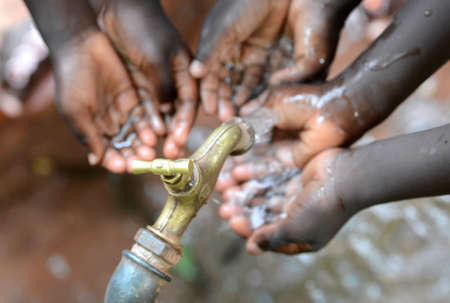Introduction: The Significance of Jal Shudhta in Indian Communities
In the vast and diverse landscape of India, water—revered as jal—holds a profound place in the hearts and lives of its people. The concept of Jal Shudhta, or clean water, is not merely a health necessity but an integral part of India’s cultural, spiritual, and practical ethos. From sacred rivers like the Ganga, which are worshipped daily, to every cup of chai brewed at home, clean water forms the foundation of countless traditions and rituals across the nation. For generations, communities have gathered by wells, tanks, and ghats to connect, celebrate festivals, and seek blessings. Access to pure water signifies more than sustenance; it embodies purity, prosperity, and well-being in Indian households. However, with rapid urbanisation and changing climates, ensuring jal shudhta has become a pressing challenge—one that communities are now addressing through innovative local initiatives rooted in age-old wisdom. This article delves into how these grassroots movements are preserving the sanctity and accessibility of clean water for present and future generations.
2. Grassroots Movements: Local Solutions for Water Purity
Across India, the spirit of “Jal Hi Jeevan Hai” (Water is Life) has inspired numerous grassroots movements that address local water challenges with ingenuity and collective action. In rural villages and bustling towns alike, communities have come together to revive ancient wisdom and blend it with modern techniques, ensuring clean water for all. These efforts reflect the Indian ethos of “Sabka Saath, Sabka Vikas” (Together with All, Development for All), showing how unity can transform water scarcity into abundance.
Rainwater Harvesting: A Revival of Traditional Wisdom
States like Rajasthan, Tamil Nadu, and Karnataka have witnessed a resurgence in rainwater harvesting practices. From rooftop collection systems in Chennai to kunds (traditional stepwells) in desert hamlets, people are capturing the monsoon’s blessings. In urban Bengaluru, residential societies have adopted rooftop rainwater filters, reducing dependency on borewells. Schools in Gujarat are also leading by example, teaching children how to store rainwater for daily use. These local solutions not only recharge groundwater but also foster a sense of stewardship towards nature.
Well Restoration: Breathing Life Back into Forgotten Resources
The restoration of open wells—known locally as “baolis,” “stepwells,” or “kalyanis”—is another powerful movement sweeping across states such as Maharashtra and Kerala. Communities organize shramdaan (voluntary labor) drives to desilt neglected wells and clear invasive vegetation. This hands-on approach brings together people from all walks of life, rekindling traditional bonds over a shared resource. Restored wells now provide safe drinking water even during harsh summers, turning community effort into a lifeline.
Traditional Conservation Techniques: Ancient Methods for Modern Challenges
Many regions are rediscovering time-tested water management systems tailored to their unique landscapes:
| State | Technique | Description |
|---|---|---|
| Rajasthan | Johads & Kunds | Earthen check dams and circular stepwells that collect and store rainwater. |
| Karnataka | Kere (Tanks) | Large village tanks interconnected for community irrigation and drinking needs. |
| Maharashtra | Paani Panchayats | Water councils that manage equitable distribution among villagers. |
| Tamil Nadu | Eri (Tanks) | Ancient tank systems that conserve surface water for agriculture and domestic use. |
Success Stories: Inspiration from the Heartland
In Alwar district, Rajasthan, villagers revived over 300 johads, transforming barren land into fertile fields—earning them national recognition. Similarly, in Kodagu (Coorg), Karnataka, watershed committees rejuvenated forest streams using vetiver grass plantations and gully plugs. Such stories highlight how India’s heritage and community spirit can overcome environmental adversity through mindful action.
Towards Jal Swaraj: Water Self-Reliance for Every Community
The journey towards clean water in India is rooted in local participation and respect for ecological balance. As more communities embrace these grassroots initiatives—combining herbal wisdom with practical conservation—they pave the way for sustainable “Jal Swaraj” (water self-reliance) across Bharat’s diverse landscape.

3. Role of Panchayats and Mahila Mandals in Water Management
When it comes to the grassroots management of clean water sources in India, the role of Panchayats and Mahila Mandals is both ancient and evolving. Panchayats, the traditional village councils, have long been the custodians of community resources, drawing on local wisdom (lok vidya) and a deep understanding of their region’s natural cycles. In both rural hamlets and peri-urban colonies, these bodies take collective responsibility for the maintenance of wells, ponds, and borewells, often employing time-tested techniques like rainwater harvesting (jal sanchayan) and watershed management.
Mahila Mandals, or women’s collectives, have emerged as powerful agents for change in recent decades. Recognizing that women are traditionally the primary fetchers and users of water in Indian households, these groups have taken up advocacy for clean water as a matter of health, dignity, and empowerment. Through initiatives such as jal jagrukta abhiyan (water awareness campaigns), Mahila Mandals educate their communities about waterborne diseases and mobilize action for source protection—be it cleaning step-wells (baolis), safeguarding hand-pumps from contamination, or lobbying the Gram Panchayat for piped water connections.
Importantly, when Panchayats and Mahila Mandals join hands, their synergy amplifies impact. For example, many villages now see joint committees where elected leaders (Sarpanch, Upsarpanch) collaborate with women’s representatives to plan seasonal desilting drives or coordinate with government schemes like Jal Jeevan Mission. This partnership helps bridge the gap between policy intent and ground reality by ensuring that voices from every household—especially those who bear the brunt of water scarcity—are heard.
Across states from Rajasthan’s desert outposts to the lush fields of Kerala, these local governance structures exemplify how Indian communities blend traditional stewardship with modern advocacy. By honouring local customs while adopting scientific best practices, they not only secure clean drinking water but also foster a sense of collective ownership—a vital ingredient in any sustainable solution.
4. Traditional Knowledge Meets Modern Technology
India’s journey towards clean water is deeply rooted in its ancient wisdom, where nature and daily life have always been intertwined. Today, community-led initiatives are finding strength by blending traditional practices with modern innovations to purify and conserve water. For generations, Indian households have relied on herbal solutions like neem (Azadirachta indica) twigs for their antibacterial properties and tulsi (Ocimum sanctum) leaves for natural purification. These methods, once a part of daily rituals, are now being scientifically validated and adapted to larger community water projects.
Integrating Local Wisdom with Science
Community groups across various states are rediscovering the effectiveness of indigenous filtration systems made from locally available materials such as sand, charcoal, and specific medicinal herbs. In rural Maharashtra, self-help groups use neem-coated sand filters in handpump wells to inhibit bacterial growth. In Karnataka, temples and schools encourage the use of tulsi leaves in water storage tanks to maintain freshness and purity.
Blending Practices: An Overview
| Traditional Practice | Modern Adaptation | Impact on Water Quality |
|---|---|---|
| Neem Twigs | Incorporated in bio-sand filters | Reduces harmful bacteria; improves taste |
| Tulsi Leaves | Added to storage tanks & filtration units | Natural disinfectant; enhances freshness |
| Earthen Pots & Charcoal Filtration | Combined with UV or RO systems in urban areas | Removes sediment & odour; complements modern tech |
Sustaining Heritage for Future Generations
This thoughtful synergy between age-old herbal wisdom and cutting-edge technology not only preserves India’s rich cultural heritage but also offers cost-effective, eco-friendly solutions for today’s water challenges. By honouring both science and tradition, communities empower themselves to create sustainable sources of clean water—nurturing health, harmony, and the spirit of collective progress.
5. Collaborations with NGOs and Government Schemes
In India, the strength of community initiatives for clean water sources lies in the power of partnerships. When local communities come together with Non-Governmental Organisations (NGOs) and government schemes such as the Jal Jeevan Mission, the impact is amplified at the grassroots level. These collaborations bridge gaps in resources, technical expertise, and awareness, ensuring that water solutions are both sustainable and culturally relevant.
The Role of NGOs in Water Management
NGOs have long played a vital role in supporting rural and urban communities across Bharat. Their deep understanding of local challenges and their ability to mobilise volunteers make them ideal partners. By conducting workshops, training sessions, and awareness campaigns on water conservation, they empower communities to take ownership of their water sources. For example, organisations like WaterAid India and Gram Vikas have transformed countless villages through rainwater harvesting and sanitation projects tailored to local needs.
Government Initiatives: The Jal Jeevan Mission
The Jal Jeevan Mission (Har Ghar Jal) is a flagship scheme by the Government of India aiming to provide tap water connections to every rural household. This initiative recognises the importance of decentralised planning and community participation. Panchayats, women’s groups, and youth clubs are actively involved in implementing water supply schemes, ensuring accountability and transparency.
Synergy at the Grassroots Level
The magic happens when these entities join hands. Community members bring local knowledge—like traditional rainwater harvesting practices or herbal filtration methods—to the table. NGOs add their facilitation skills and resources, while government schemes provide funding and technical support. Together, they create solutions that are practical, sustainable, and accepted by all stakeholders. Such collaborations not only improve access to clean water but also strengthen social bonds within the community—truly reflecting the spirit of Vasudhaiva Kutumbakam (the world is one family).
6. Overcoming Challenges: Addressing Pollution and Urbanisation
Across India, the journey towards clean water sources is not without its obstacles. Rapid urbanisation, rising population, and pollution pose significant threats to traditional water bodies, often turning rivers and lakes into carriers of waste rather than sources of life. Climate change further intensifies these challenges by bringing unpredictable rainfall patterns and extended droughts. Yet, Indian communities are responding with a spirit rooted in jugaad—an innovative, resourceful approach to problem-solving that reflects our grassroots wisdom.
Combating Water Pollution through Local Action
In many towns and villages, people are taking up the responsibility to reduce water pollution at the source. Initiatives such as segregating household waste, constructing soak pits, and promoting eco-friendly Ganesh Visarjan have helped decrease the load of contaminants entering water systems. Community-led cleaning drives, often inspired by Swachh Bharat Abhiyan, have restored ponds and stepwells that once lay forgotten under heaps of garbage. These efforts reflect the Gandhian principle of being the change we wish to see in our surroundings.
Managing Population Growth and Urban Expansion
With more people migrating to cities, urban water demand is skyrocketing. In response, local groups are reviving ancient rainwater harvesting techniques like rooftop collection and recharging wells—methods that have sustained Indian settlements for centuries. In Bengaluru, for instance, apartment societies are coming together to install rainwater filters and manage their own water supply. Such collective actions not only ease pressure on municipal systems but also foster a sense of shared responsibility among residents.
Innovative Approaches Amidst Climate Change
The impacts of climate change call for both tradition and innovation. Many communities are now embracing organic farming practices that conserve water and protect soil health, thus reducing chemical runoff into streams. In Rajasthan’s arid regions, villagers collaborate to build johads (earthen check dams), which capture monsoon rains and recharge groundwater naturally—a living example of how ancestral knowledge can be adapted for modern resilience.
By blending time-honoured wisdom with new ideas, Indian communities are rising above daunting challenges. Their commitment not only safeguards precious water sources but also strengthens the bonds of unity—reminding us that when we nurture nature together, we create a legacy of abundance for generations to come.
7. Conclusion: The Path Forward for Swachh Jal in India
Community-led initiatives have illuminated a powerful truth: the health and prosperity of Bharat’s villages and cities are intimately tied to the purity of their water sources. Across the nation, from the bustling ghats of Varanasi to the tranquil wells of Kerala, local action has revived ancient wisdom—like rainwater harvesting, sacred pond restoration, and eco-friendly filtration—showing that sustainable solutions often lie in our own backyard. However, challenges remain. Rapid urbanisation, industrial pollution, and climate change continue to threaten jal suraksha (water security). At times, lack of awareness or resources hampers even the most dedicated communities. Yet, as we’ve seen, collective effort—be it through women’s self-help groups in Rajasthan or tech-driven youth volunteers in Bengaluru—can spark real transformation.
The path forward demands both remembering our roots and embracing innovation. Every drop matters: from choosing chemical-free cleaning at home to joining hands for village tank clean-ups during Navratri, each action ripples outward. Let us nourish our children with stories of how their elders protected rivers like Ganga Ma, while also equipping them with scientific know-how for tomorrow’s challenges. As Gandhiji taught us, “Be the change you wish to see”—let us walk together on the journey toward Swachh Jal (clean water) for all. The responsibility is ours—not just as individuals but as a collective society—to ensure that future generations inherit not only clean rivers and wells but also a living tradition of care, stewardship, and unity in safeguarding Bharat’s lifeblood.


